Blog
Blog
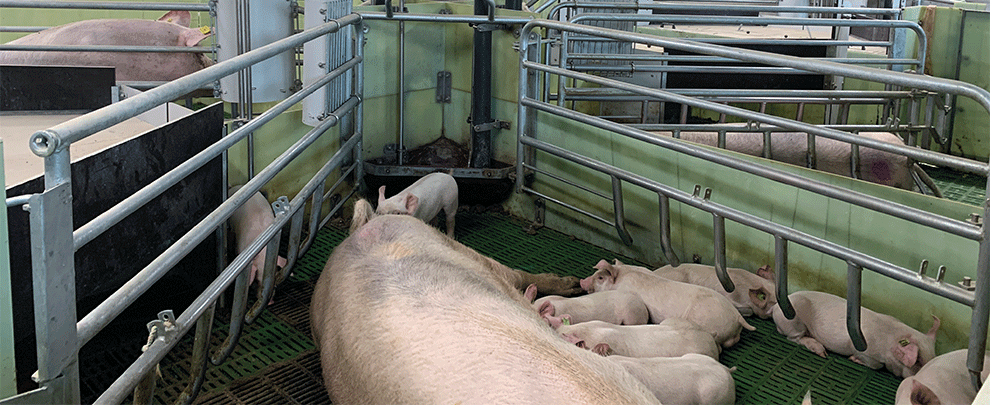
Effects on feed administration frequency on lactating sows and piglets
18 of September of 23 - Studies
Author. Albert Pijuan Potrony
In the present study, it was hypothesized that the feed administration frequency and the maternity housing system have a marked effect on feed consumption during lactation and, consequently, on the body condition (BC) of the sow and the weight gain of the litter from birth to weaning during the summer. It is by definition an experimental project that aims to determine what number of feedings per day and which maternity housing system lead to better productive results.
OBJECTIVE
The main objective is to determine what frequency of feed administration (3 feedings vs. 5 feedings /day) and which housing system (cage vs. free) in maternity leads to a higher feed consumption during lactation, a lower loss of BC by sows, a better WCI (Weaning-Coverage Interval), and a greater weight of the litter at weaning.
INTRODUCTION
The experimental study was carried out in the Torre del Cardener breeding sow farm, located in the municipality of Clariana de Cardener (Solsonès, Lleida) during the period between July and August 2022. The average daily outdoor temperature during the study ranged between 19.5ºC and 28.0ºC, while the average relative humidity outside was between 37% and 84%. It is a commercial farm of 1,600 sows with 4,500 transitional places.
To carry out the research, 88 F1 hybrid sows from a cross of maternal genetics Landrace (♀) x Large-White (♂), inseminated with Duroc DanBred semen, were used. Two consecutive batches of sows (from two weekly production bands, band 1, n= 45; band 2, n= 43) were studied. A total of 88 sows were included, 15 of them nulliparous. The sows were randomly divided into four different sections within the same room, following a 2x2 factorial design, where the effect of the number of feedings per day (3 vs. 5) and the maternity housing system (free vs. cage) were analysed (Table 1).
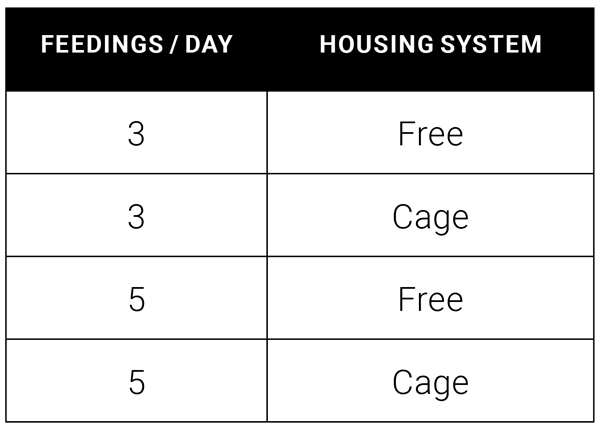
Table 1. Number of feed intakes per day and type of maternity accommodation.
The study focused on the timing from 110 days from the sows’ gestation until weaning. A long lactation period was done since weaning was carried out at 4 weeks postpartum (average lactation of 26.3 ± 0.49 days). Subsequently, the WCI was also assessed.
Currently, the farm has a total of 364 farrowing places, 112 of which are Skiold JLF15 free farrowing places (2.5 x 2.4 m; 6m2). In the maternity wards, sows were kept in individual animal welfare accommodations from one week before calving until weaning. All sows in the study were caged until the third day postpartum, and only those included in the "free" management had their farrowing opened from the third postpartum day until weaning.
The farm has the automatic feeding system Dositronic M from Rotecna in all farrowing places. The Dositronic M is an electronic feeding system for lactating sows that allows feeding strategies to be applied automatically. It allows one to apply feeding curves and assign them to each animal individually, dividing the daily ratio into several doses. It has a sensor, which the sow must activate so that its ration is dispensed. A system of LED lights allows you to know at any time and instantly how the sow is eating and the level of feeding that is being applied, which allows you to reduce or increase the level of feeding by touching a single button on the same device. Constant VRH-3D water valves (Rotecna) are also installed in all farrowing places.
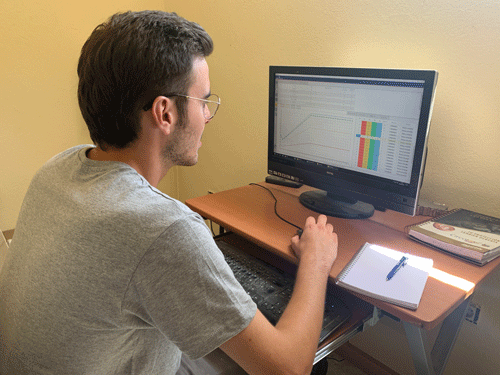
Albert carrying out a control of the feeding curves. Photo: Rotecna.
METHODOLOGY
Using the Dositronic M software, two different feeding curves were defined, one for nulliparous and one for multiparous sows.
The feeding curve defined for multiparous sows offered 3 kg/day at calving and 2 kg/day on the day of calving. An increase of 0.5 kg/day was established from the first postpartum day to the 15th day of lactation. From day 15 until the day of weaning, a maximum of 8.4 kg/day was offered. From day 15 of lactation, sows that presented a consumption of between 95 - 100% of the ration offered for 2 consecutive days, were increased 1 level of Dositronic M (6% of the daily ration), therefore, they were offered a maximum of 9 kg/day.
The only difference between the feeding curve defined for nulliparous sows was that from day 15 of lactation until the day of weaning, a maximum of 7.4 kg/day was offered due to their lower feed consumption. In addition, it was also possible to determine the number of daily feed feedings and the schedule of these. (Table 2).

Table 2. Amount of feed from day 15 of lactation. Sows that did not consume the offered amount for 2 days had their Dositronic level reduced by 1 (-6%).
The feed provided was the same for all sows in the study from the time they entered the maternity wards until they were weaned.
RESULTS
Feed consumption and feeding efficiency by lactating sows
The total feed consumption by sows, throughout lactation, was influenced by the number of daily feedings, being lower in sows fed with 5 feedings/day compared to those fed with 3 feedings/day (118.3 ± 4.9 kg vs. 128.2 ± 4.9 kg; P<0.05), while the maternity housing system (cage vs. free) did not significantly affect total feed consumption (P>0.05).
Mean feed consumption did not differ significantly in either of the two study variables (P>0.05).
The feeding efficiency per piglet produced (kg feed sow/kg piglet produced) was statistically very similar between sows fed with different feedings/day (P>0.05) and between sows housed in different systems (P>0.05) (Table 3).
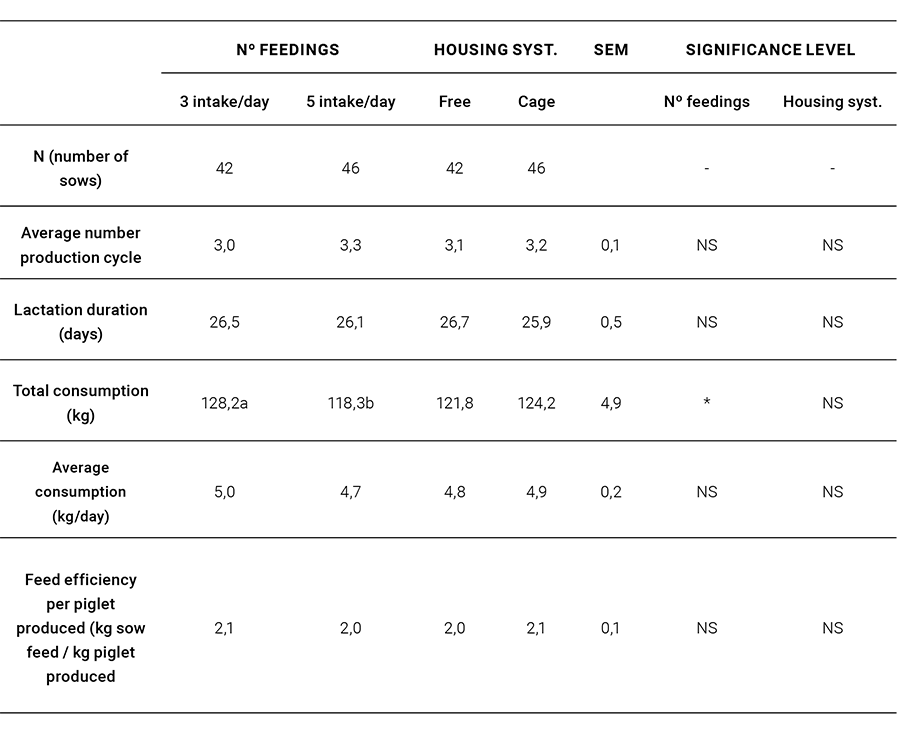
Table 3. Feed efficiency. // *SEM = standard error of measurement. // *NS = not significant.
The following figure shows the average daily intake (ADI) by lactating sows, distributed by weeks, depending on the number of feed feedings per day (3 vs. 5). It is observed that sows fed with 3 feedings/day presented a higher average feed consumption from the first week postpartum compared to those fed with 5 feedings/day. It is relevant to highlight that the sows fed with 5 feedings/day maintained the same average feed consumption during the last week of lactation compared to the previous week.
On the other hand, the average feed consumption by sows fed 3 feedings/day decreased slightly (Figure 1).
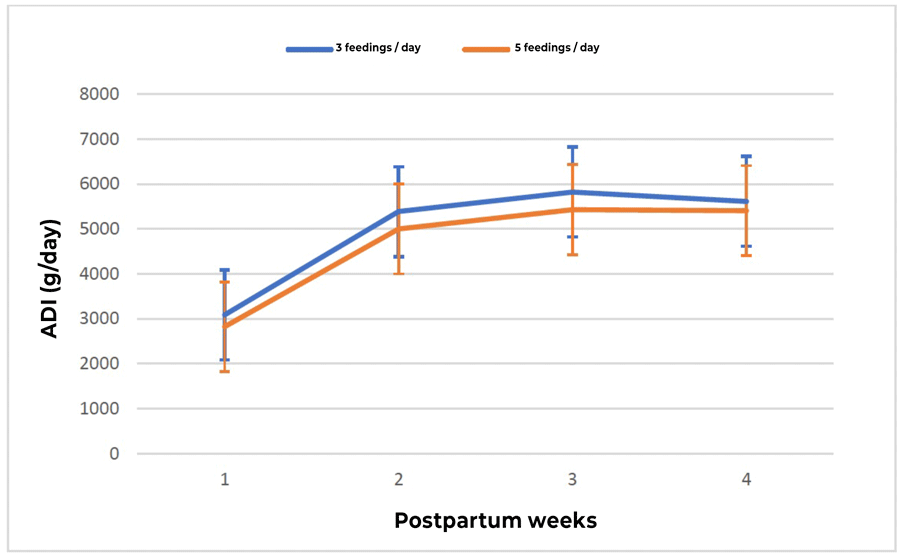
Figure 1. Average daily intake (ADC) by lactating sows.
The weekly distribution of the average daily intake (ADI) according to the maternity housing system (free vs. cage) is presented below. Initially, during the first week postpartum, the average feed consumption was practically the same between the two maternity housing systems. It can be observed that the second week postpartum is when the caged sows begin to present a higher consumption compared to those housed in free farrowing systems.
Body condition (BC) and weaning-coverage interval (WCI)
The frequency of feed administration and the maternity housing system did not influence muscle loss during lactation (P>0.05). The dorsal fat loss was statistically similar between sows fed with different feedings/day (P>0.05). On the other hand, it did differ significantly between the two types of housing systems, being lower in caged sows compared to those housed in free farrowing (-4.4 ± 0.4 mm vs. -5.6 ± 0.4 mm; P<0.05).
The WCI did not differ significantly between sows fed with different feedings/day (P>0.05). On the other hand, it did, although minimally, between the different housing systems, since sows housed in free farrowing presented a higher WCI than sows housed in cages (6.1 ± 0.4 days vs. 4.6 ± 0.4 days; P<0.05). Finally, the frequency of feed administration and the maternity housing system did not influence the percentage of anoestrus by the sows (P>0.05) (Table 4).
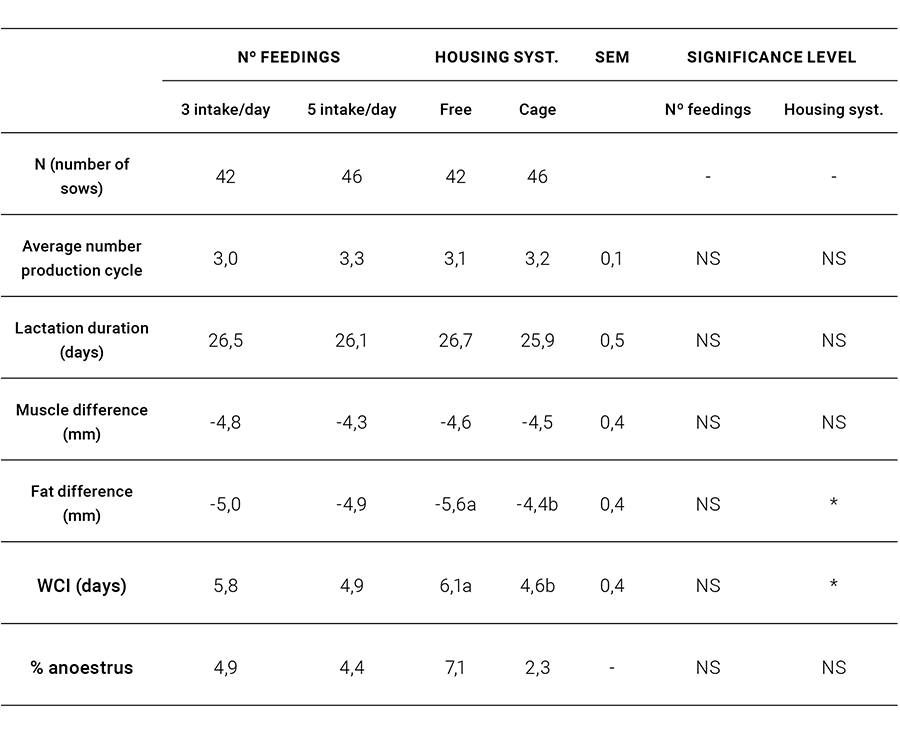
Table 4. Food efficiency. // *SEM = standard error of measurement. // *NS = not significant.
Parameters related to the productive results of piglets
The total weight of the post-adoption litter did not differ significantly between the number of daily feedings (20.7 ± 0.3 kg vs. 20.5 ± 0.3 kg; P>0.05) or between the maternity housing system (21.0 ± 0.3 kg vs. 20.3 ± 0.3 kg; P>0.05). The mean weight of the post-adoption litter also did not differ between the number of daily feedings or between the maternity housing system (1.4 ± 0.0 kg; P>0.05).
The % of losses did not imply statistically significant differences between the number of daily feedings (15.1 ± 1.8 % vs. 15.7 ± 1.8 %; P>0.05) or between the maternity housing system (16.9 ± 1.8% vs. 14.1 ± 1.8%; P>0.05).
The frequency of feed administration and the maternity housing system did not affect the mean daily gain (MDG) produced (0.2 ± 0.0 kg/day; P> 0.05).
The total weight and mean weight of the litter produced also did not differ significantly (Table 5).
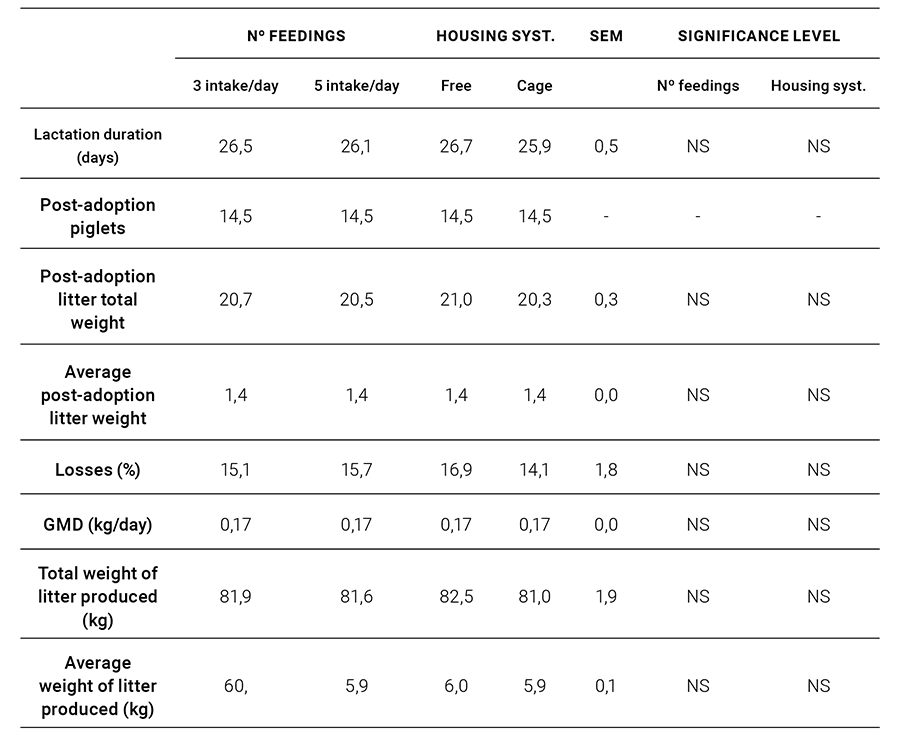
Table 5. *Losses (includes all losses and all piglets removed during lactation). // *GMD = mean daily gain.
The survival rate of piglets is very similar among sows fed different feed feedings per day. Regarding the housing system, it is necessary to remember that all the sows in the study were caged until the third day postpartum, and only those that were included in the "free" management had their farrowing opened from the third postpartum day until weaning. Even so, the survival percentage of piglets in free sows is not adversely affected, from day 4 of lactation.
Annual feed consumption and conversion rate-related parameters
In the following figure, the conversion ratio (kg sow feed/weaned claw) is represented according to the number of feedings per day (3 vs. 5) and the reproductive cycle of the sows (first vs. second-third vs. ≥ fourth), which was the only variable that was affected by the interaction between the management and the productive cycle of the sows.
The conversion rate of first, second and third cycle sows did not differ statistically according to the number of daily feedings. On the other hand, the number of feedings per day did significantly affect sows with four or more cycles. As can be seen, in older sows, administering feed in 3 doses a day is much less effective than doing it in 5 doses (Figure 2).
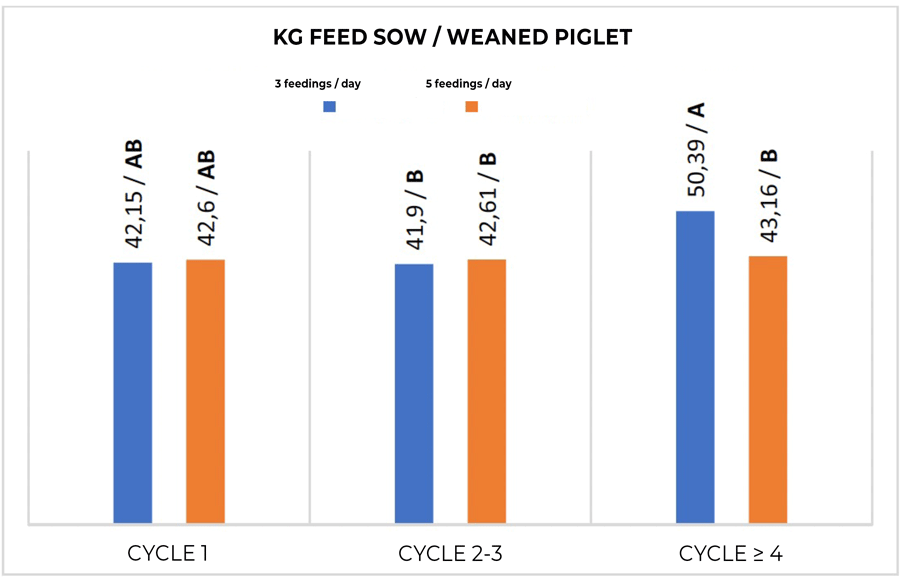
Figure 2. Conversion rate, according to the number of feed intakes.
CONCLUSIONS
Overall, it should be noted that the average feed consumption during lactation did not exceed 5 kg/day in any of the different groups. There is a high probability that heat stress is the main cause of this low intake by lactating sows. It is very important to note that the study was conducted during the hottest months of the year and therefore it would be interesting to repeat it at a colder time.
Initially, it was hypothesized that sows fed with 5 feedings/day would present a higher consumption of feed to lactation and, therefore, a lower loss of BC and a lower WCI compared to sows fed with 3 feedings/day. After performing the statistical analysis, it can be said that the frequency of administration of the feed has significantly affected the total consumption by lactating sows, although the result has not been as expected. Sows fed with 3 feedings/day have a higher total feed consumption compared to those fed with 5 feedings/day (128.2 ± 4.9 kg vs. 118.3 ± 4.9 kg; P<0.05), however, the loss of dorsal fat and, consequently, the WCI did not differ significantly.
Regarding the productive parameters of the litter, initially, it was hypothesized that sows fed with 5 feedings/day would present a higher consumption of feed at lactation and, therefore, would also present a greater weight of the litter at weaning compared to those fed with 3 feedings/day. After conducting the study, the results show that the total and average weight of the litter at weaning does not differ significantly.
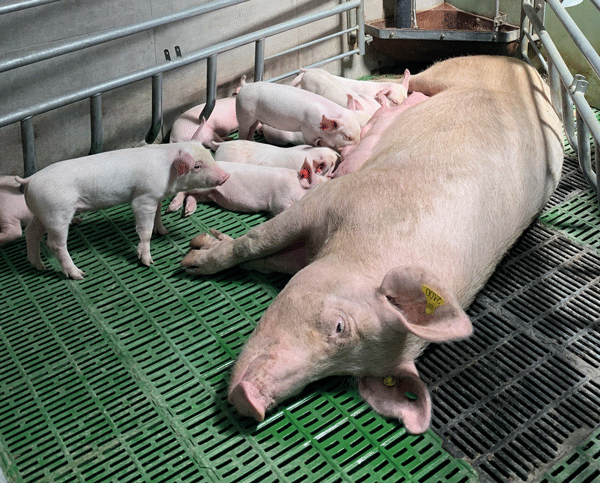
Image of a sow in a free farrowing. Photo: Rotecna.
Finally, as for the maternity housing system, this has influenced the loss of dorsal fat of lactating sows and their subsequent WCI, being higher in sows housed in free farrowing, probably because they had 6 m2 of space throughout lactation. On the other hand, it has not affected the following parameters: total and average consumption, feeding efficiency (kg feed sow/kg piglet produced), muscle loss, percentage of anoestrus and productive results of the litter.
It is essential to emphasize that the housing system has not influenced the piglets’ survival percentage, so it can be said that having free sows during lactation does not negatively impact piglet mortality rate.






